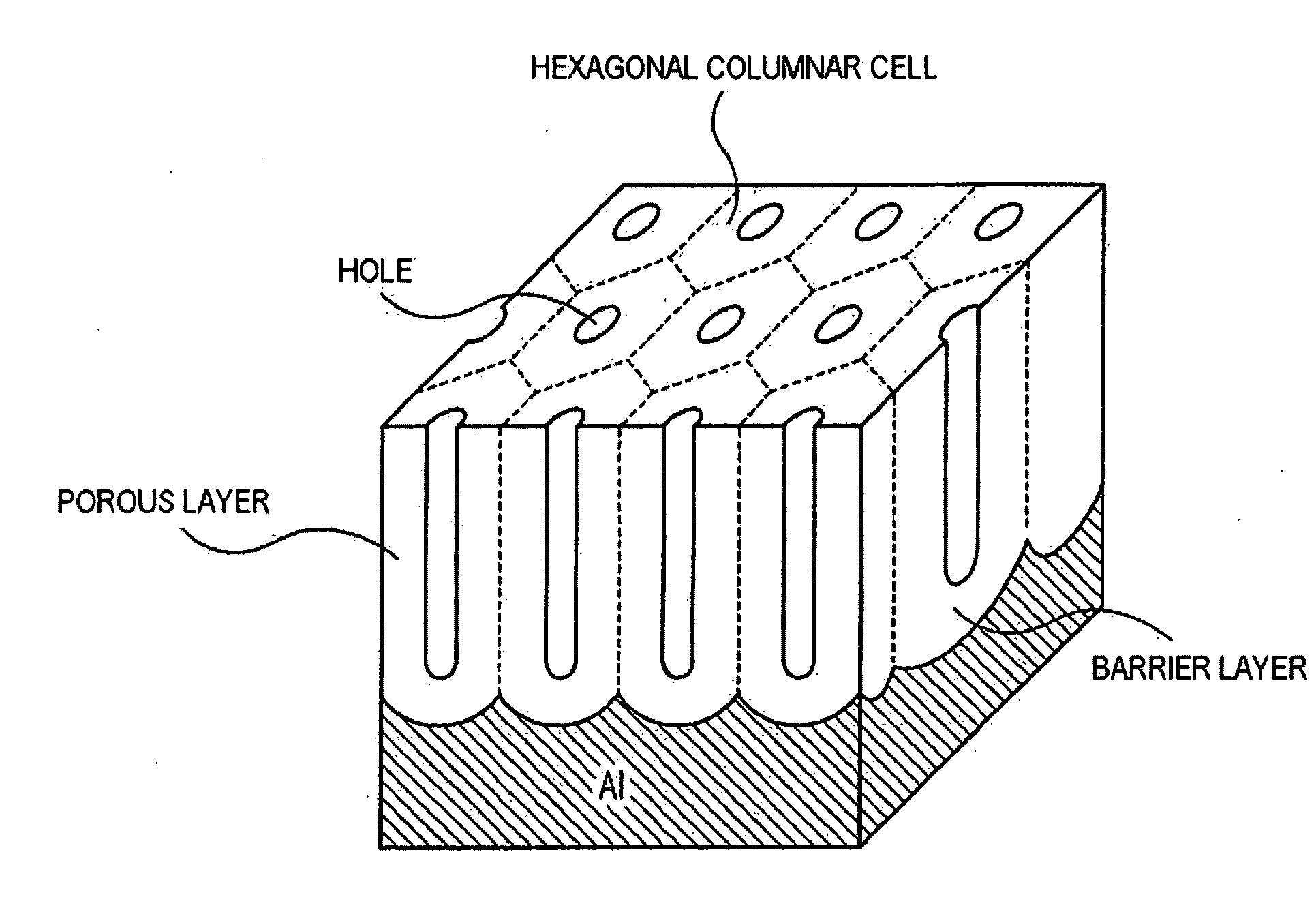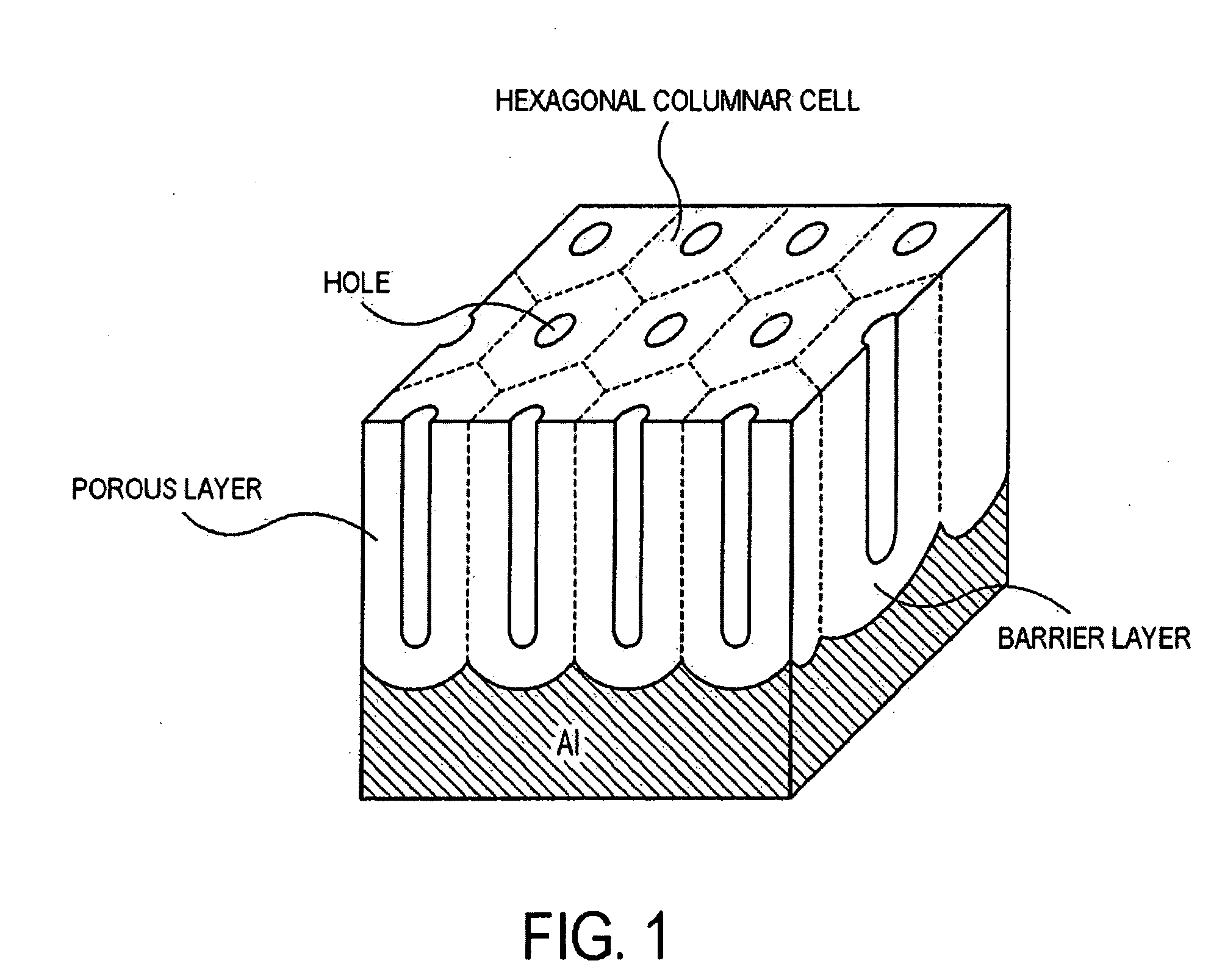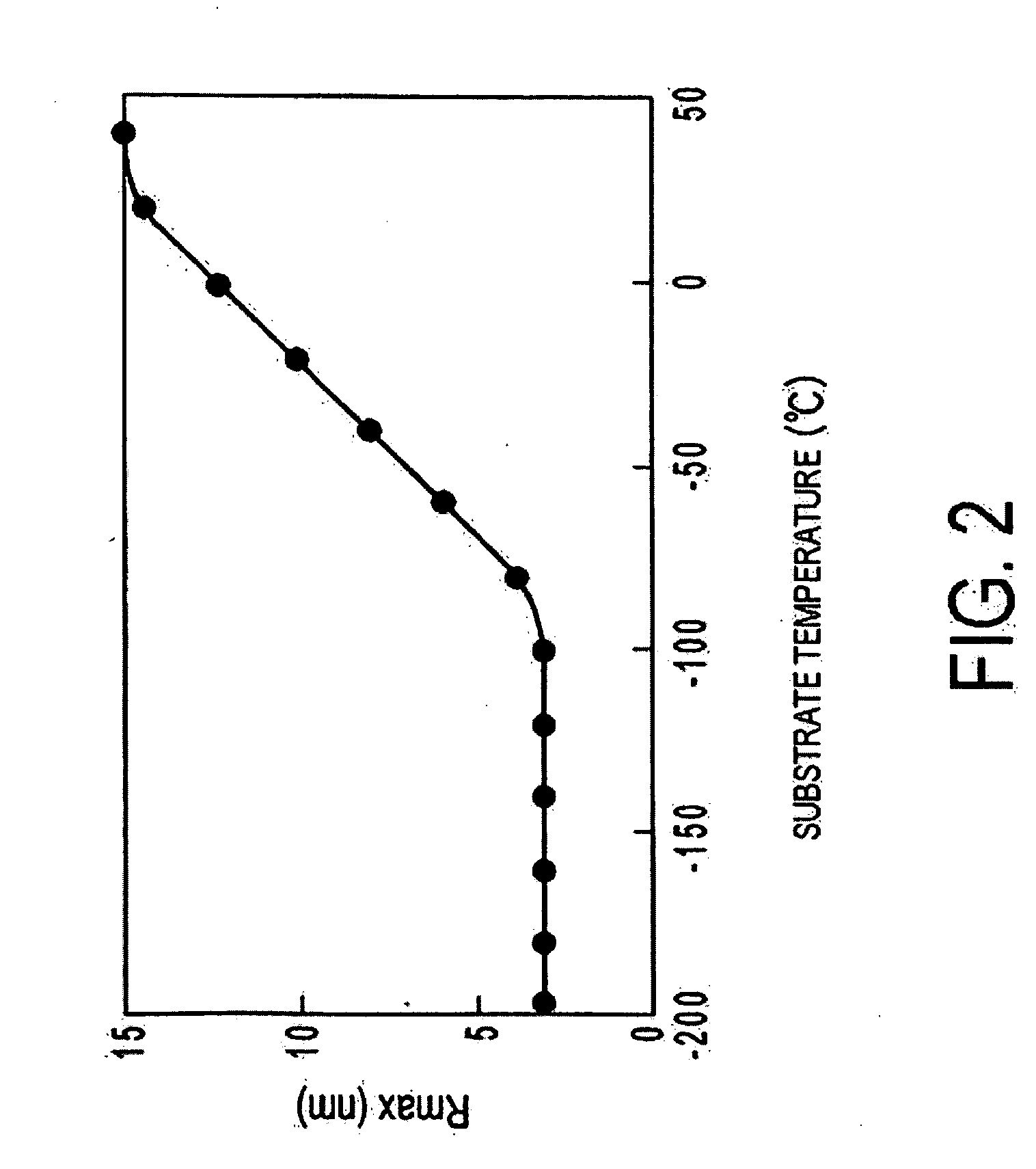Method of fabricating an alumina nanohole array, and method of manufacturing a magnetic recording medium
a technology of alumina nanohole which is applied in the field of manufacturing alumina nanohole arrays and magnetic recording mediums, can solve the problems of random inversion of magnetization, bit deterioration due to thermal fluctuations, and the limit of the recording density attainable in the first-generation of simple perpendicular recording methods, etc., to achieve the effect of improving surface smoothness
- Summary
- Abstract
- Description
- Claims
- Application Information
AI Technical Summary
Benefits of technology
Problems solved by technology
Method used
Image
Examples
example 1
Production of Aluminum Thin-Films
[0089]The aluminum thin-films used in the following examples were produced as follows.
[0090]In a sputtering apparatus having a substrate mounting stage equipped with a temperature control system composed of a liquid nitrogen feeder and a heater, a 2.5-inch silicon single-crystal substrate was mounted onto the substrate stage and film formation was carried out at various substrate temperatures. The aluminum target used for film formation had a diameter of 6 inches and a purity of 99.99%. The film-forming conditions were set to a film-forming time of 60 seconds and an aluminum film thickness of 100 nm.
[0091]FIG. 2 shows the measurement results for the maximum surface roughness (Rmax) of aluminum thin-films produced at substrate temperatures of from −196° C. (the temperature of liquid nitrogen) to 40° C. At substrate temperatures of −80° C. or below, the Rmax was about 3 nm, from which it was found to be possible to uniformly form pits of several nanome...
example 2
Substrate Temperature Dependence of Vickers Hardness of Aluminum Thin-Films
[0093]Of the conditions shown in Example 1, the temperature dependency of the Vickers hardness for both a pure aluminum thin-film (example according to present invention) having a film thickness of 100 nm produced at a substrate temperature of −196° C. and for an Al—Mg (8 wt % Mg) thin-film (comparative example) having a film thickness of 100 nm produced at a substrate temperature of 30° C. in the same way as in Example 1, aside from the use of an aluminum target composed of Al—Mg (8 wt % Mg) instead of an aluminum target having a purity of 99.99%, were investigated. The results are shown in FIG. 3.
[0094]The Vickers hardness was found to be substantially constant, regardless of the substrate temperature. In the thin-films obtained in the example of the invention using pure aluminum, the Vickers hardness was about 0.78 GPa. By contrast, in the thin-film obtained in the comparative examples using an Al—Mg alloy...
example 3
Pit-Forming (Texturing) Temperature Dependence of Vickers Hardness of Aluminum Thin-Films
[0097]The pit-forming (texturing) temperature dependence of the Vickers hardness of the thin-film according to the invention produced using pure aluminum in Example 2, and of the Vickers hardness of the thin-film according to the comparative example produced using an Al—Mg (8 wt % magnesium) alloy were investigated. The results are shown in FIG. 4.
[0098]In the Al—Mg thin-film, the Vickers hardness did not decrease even when the temperature was raised to 200° C. By contrast, when an aluminum thin-film was produced from pure aluminum at a substrate temperature of −196° C. according to the present invention, the Vickers hardness decreased suddenly at a temperature of 100° C. or more and at a temperature of 150° C. to 200° C. became about 50% of the room-temperature value.
[0099]Based on this data, when molding was carried out while holding at 150° C. both the pit-forming mold and the pure aluminum t...
PUM
| Property | Measurement | Unit |
|---|---|---|
| Temperature | aaaaa | aaaaa |
| Temperature | aaaaa | aaaaa |
| Temperature | aaaaa | aaaaa |
Abstract
Description
Claims
Application Information
 Login to View More
Login to View More - R&D
- Intellectual Property
- Life Sciences
- Materials
- Tech Scout
- Unparalleled Data Quality
- Higher Quality Content
- 60% Fewer Hallucinations
Browse by: Latest US Patents, China's latest patents, Technical Efficacy Thesaurus, Application Domain, Technology Topic, Popular Technical Reports.
© 2025 PatSnap. All rights reserved.Legal|Privacy policy|Modern Slavery Act Transparency Statement|Sitemap|About US| Contact US: help@patsnap.com



